Chiridoni-Sotira cave
-
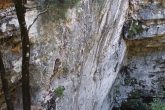
The divers search the area to find the appropriate spot, to attach the ropes for the equipment transfer. -

Setting up the operation to transfer the equipment, lower into the cave. The downhill is really steep. -

The view, that the divers enjoy, when near the entrance of the flooded cave of Chiridoni. -
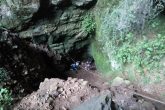
The final stage, before the diver reaches the entrance. -
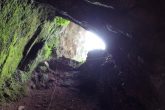
Just before the divers leave the light of the day. Humidity in this part is constant year round. -

A view of the entrance of the cave, just before the dive begins. -

Happy faces, after the dive. -

The decoration of Chiridoni is amazing, and consists of huge Stalactites and Stalagmites. -

190 meters after the entrance of the cave, divers come accross a huge Dome chamber. At this point they can admire a steep uphill, from which the rays of the sun can slide in. On the surface one can find the remains of an old Orthodox church of Sotira. -
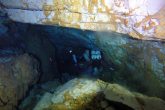
The cave of Chiridoni is full of limestone deposits, Huge chambers and narrow passages. -
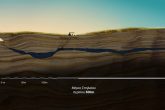
Mapping of Chiridoni-Sotira cave -

Video from Chiridoni-Sotira cave
Kefalonia is the biggest island in the Ionian complex, in Greece and is well known for its high seismic activity. On the east side of the island and around Sami village these phenomena have created numerous caves and chasms. Many of these caves have compartments flooded with water. Grafas Diving team, assisted by Makis Sotiropoulos and his local diving center (Aquatic dive center), set the foundations for an extensive project to film the caves in this area. Having already filmed the caves of Karavomilos and Zervati in the summer of 2017, the team returned on the April of 2018 to film Chiridoni – Sotira cave network.
History
The first speleological expeditions in the area of Sami were initiated in 1951 by the Greek Speleology Company founters, Giannis Petrohilos and his wife Anna. The expeditions lasted years, but the highlight was, when Austrian speleologists joined the mission, in 1963. In this mission, they tried to determine if there was a connection among all the cave systems of the island. They acieved that, by using a special chemical substance, called Ouranini. The chemical was released in the Chasm of Argostoli and after two weeks, traces of it, appeared in Karavomilos and Melissani lake in Sami, as an obvious proof that there is a vast connection of all the caves and the water flows verticaly through the island with a west to east direction. In 1987 and after a petition by the local president of Poulata village, the Speleology and Paleoantrhopology organisation of Greece initiated an expedition in the area and confirmed that there are noumerous caves in the region and procceded to the exploration of Agalaki chasm. The mission was parted in two seperate projects, the first started at 25th of December 1988 till 11 of january 1989 and from 25th of April 1989 till 25th of May 1990. Noumerous chasms and caves where explored and the speleologists concluded that the caves where flooded due to the sinking of the island. The earthquakes and the rise of the sea waters also contributed. In detail, the caves that were mapped, were; Melissani (240m. length and 33m. depth), Agia Eleousa (254m. length and 29m. depth and 112m. lenth and 12m. depth) and finally karavomilos (240m. length and 13m. depth).
Information about Chiridoni – Sotira cave
Chiridoni cave is located very close to Poulata village in Kefalonia and is close to many other caves and chasms in the area. One needs to drive through a gravel road, open the gate of a private property, that holds goats and sheeps inside and descent via a steep hill. It is necessary for the divers to carry the equipment with an all wheels drive vechicle. Once the divers are in the property, they have to carry the equipment in very difficult conditions, through thick vegetation and loose gravel ground, with angles that may reach 45-50 degrees. The entrance of the cave lays almost 250 meters from where the car is parked, making the equipment transportation a painstacking experience, and it is also important to wear climbing equipment and safety gear. Once the divers enter the water, everything changes completely. The huge Chambers of the cave change quickly and are decorated with enormous stalactites and stalagmites. The size of the chambers is so extented, that even the powerfull video lights where not enough to completely light the space to its full capacity. The water is very transparent and has a steady temperature of 14 degrees, throughout the year. After just 190 meters into the cave, the divers reached a 10 meter high chamber, that has a big and unsteady rockfall on its side, that leads to a small hole, from where light comes in. A surface servay the following day, showed the hole leaded to the old Sotira church and It is also the only entrance for the hundreds of bats that live in the cave. Continuing further, the divers saw many rocks that had been detached by the roof, due to seismic activity. Something special, is that in the cave, there is a species of grasshopper, that is adopted to the environment, by completely loosing its wings and having eyes capable of seeing in absolut darkness. During filming, we had the opportunity to record an eel, wondering close to the entrance of the cave. In conclusion, Chiridoni is the most interesting, beautiful and intense caving experience to date, for our team.
Source: Municipality of culture – Man and Speleoenvironement, Athens 1998

